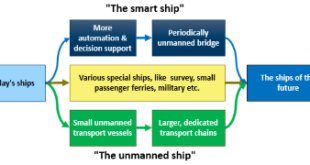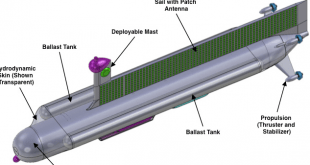Introduction: In the ever-evolving landscape of defense technology, one key component stands out as the linchpin of accurate and reliable sensing systems: antennas. These unassuming devices are the unsung heroes of the Department of Defense (DoD), responsible for transmitting and receiving electromagnetic signals that underpin communication, surveillance, navigation, and more. …
Read More »TimeLine Layout
October, 2023
-
13 October
Revolutionizing Security, Military, and Communications: The Disruptive Potential of Terahertz Technology
Terahertz is a fascinating technology that has been around for decades, but it has only recently gained significant attention due to its unique capabilities and potential applications. Terahertz waves are electromagnetic waves with frequencies lying between microwave and infrared regions of the spectrum (100 to 3000 gigahertz frequencies or 0.1 …
Read More » -
13 October
DARPA PROVERS: Advancing Formal Methods for Software Assurance in Critical Systems
The Department of Defense (DOD) relies heavily on software systems for its critical missions, including national security and defense operations. However, software systems are inherently prone to defects and vulnerabilities that can compromise their integrity, security, and reliability. To address this challenge, DARPA is investing in a nascent discipline known …
Read More » -
12 October
6G Wireless Technology Market Growth: What to Expect in the Next Decade
The world has witnessed a significant evolution in wireless communication technology in the past few decades. From the first generation of analog cellular networks to the current 5G technology, the industry has come a long way in terms of speed, reliability, and connectivity. Mobile communications have been undergoing a …
Read More » -
11 October
Designing RF and Microwave Products for Space Applications: Balancing Customer Requirements with Technical Solutions
In today’s era of satellite communication and space exploration, RF and microwave products play a vital role in enabling successful missions. These products need to meet a wide range of customer requirements and technical solutions while maintaining reliability and durability in harsh space environments. This article will discuss the critical …
Read More » -
10 October
From Satellite Internet to Earth Observation: A Look at Current Satellite Programs
Satellites are an essential part of our modern world. Satellites have become a vital component of modern technology, enabling us to communicate, navigate, and observe the Earth and beyond. There are many different types of satellites, each with its own unique purpose. They are used for a variety of purposes, …
Read More » -
10 October
From Ships to Smart Cities at Sea: How IoT and AI are Revolutionizing the Maritime Industry”
The maritime industry is one of the oldest and most important industries in the world. It is responsible for transporting goods and people around the globe, and it plays a vital role in the global economy. However, the maritime industry is also facing a number of challenges, including rising fuel …
Read More » -
9 October
Closing the Gap: How the US Military’s Next-Generation Electronic Warfare Systems Are Reducing Russia’s Military Edge
All modern forces depend on unimpeded access to, and use of, the EM spectrum in conducting military operations. Therefore, there is a requirement to gain and maintain an advantage in the electromagnetic spectrum by countering adversary’s systems and protecting one’s own systems. Adversary can disrupt and degrade the navigation systems …
Read More » -
8 October
Modular Platforms for Multi Naval Missions: Improving Mission Effectiveness Through Flexibility and Versatility
The naval landscape is constantly evolving, and the threats facing navies around the world are becoming increasingly complex. In order to meet these challenges, navies need to be able to adapt quickly and effectively. One way to do this is to adopt modular platforms that can be configured for a …
Read More » -
7 October
Advanced Materials and Technologies Transforming Submarine Hulls for Enhanced Warfighting Capabilities
The world’s oceans are vast and deep, and submarines have been a vital component of naval forces for decades. These underwater vessels can operate silently, dive to great depths, and strike from unexpected directions, making them an incredibly effective tool in modern warfare. However, the ability of submarines to remain …
Read More »
 International Defense Security & Technology Your trusted Source for News, Research and Analysis
International Defense Security & Technology Your trusted Source for News, Research and Analysis



